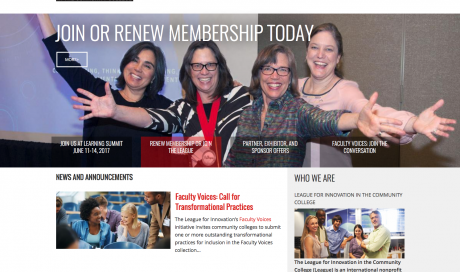- 576 Views
- 0 Comment
- communication . Community Engagement . Content Marketing . Linguistics . Steven Pinker .
We’ve talked a lot about how to promote content, but we really haven’t touched on how to write good content. Strictly focusing on content promotion over content creation is kind of like spending an hour wrapping an empty box; sure, it will look nice, but you’re going to have some very disappointed children come Christmas morning. Having gripping content that your readers enjoy stroking their eyeballs over is essential to the success of any content provider.
With that said, here are my 5 tips for writing more engaging content, and since the internet seems to love lists with the same passion as Ricky loves Lucy, we’ll start with:
1: Make a list. Lists have become ubiquitous among on-line articles, and have also garnered something of a bad rap for being trash content. But this doesn’t have to be the case! Organizing your content in an enumerated list helps give your article a solid since of flow. It also highlits your key points, and will help them to stick in your readers head.
2: Don’t mistake professionalism for boring. If you’re an association that caters to a professional market, you want your content to sound, well, professional. But newsflash, professional people are still people! If your content is as dry as stale bread, chances are its going to bore your readers, and is less likely to be memorable. Yes, if you’re delivering content to a “professional” audience, then it might be a good idea to lay off the fart jokes, but so many writers go too far in the other direction. Engage your audience on an emotional level first; this will make sure that the meat of your content– the stats, the facts, your hopes, your dreams– has a greater impact, and will stick with the reader.
3: Tell a story. Infusing our writing with narrative dates back to the Greeks, when that was the primary way knowledge was transferred. Giving a beginning, middle and end primes your audience for a journey, and lets them know that they’re not simply going to be lectured at. It also helps us to make sense, not only of what we are reading, but of the world around us. Storytelling is our method of making sense of the senseless; it gives us a better understanding of those things that confounds us. Learning through a narrative story will build confidence in your reader that they’ve really digested and internalized what they’ve read.
4: Be descriptive. Using the senses of sight, taste, touch, smell and the ability to see dead people will help your reader to better connect with your material. Even if you’re talking about numbers, the least sexy subject that can be written about, you can still make it more compelling if you give a metaphor that helps your readers to visualize what they’re reading. The more tactile you can make something, the more engaged and invested your readers will become.
5: Be you. What makes reading something especially enjoyable is knowing that another person wrote it; the idea that the reader is given insight into the mind and thoughts of another human being. In a lecture titled: “Linguistics, Style and Writing in the 21st century”, psychologist, linguist and author Steven Pinker begins his lecture by asking: “Why is so much writing so bad?” And part of his answer is that we’ve been trained that we should scrub away any traces of personality in service of “sounding smart”. He then goes on to… you know, instead of me speaking for him, here’s a link to his lecture. I highly recomend giveing this a watch for any technical or professional writer.
The list could go on, and I might return to this subject at a later date, but for now, I hope you got something out of this, even if it was just an enjoyable journey.
*Exciting news! Our exclusive video, Three Web Strategies to Increase Active Member Engagement, is online. Click here to watch this video, and learn a valuable technique to transform you association’s website into an experience your members can’t resist!
Comments
OUR RECENT
WORKS
-
American ScientistOnlineLearning
-
The League for…OnlineCommunity
-
California Association of…OnlineLearning
-
Building Owners and…OnlineCommunity
-
Indiana Bankers AssociationMobileFriendly
-
American Society of…OnlineCommunity
-
Tire Industry AssociationMobileFriendly
-
American Academy of…OnlineCommunity
-
National Association of…Commerce
-
American Society of…CMSIntegrationtoAMS
-
National Association of…DesktopApps
-
Long Beach Water…DesktopApps
-
Castaic Lake Water…OnlineLearning
-
Water Smart San…OnlineLearning
-
San Diego County…MemberSuite
-
Change Management InstituteMemberSuite
-
American Society of…CMSIntegrationtoAMS
-
American Association of…OnlineCommunity
-
Building Owners and…CMSIntegrationtoAMS
-
Council of Chief…CMSIntegrationtoAMS


























